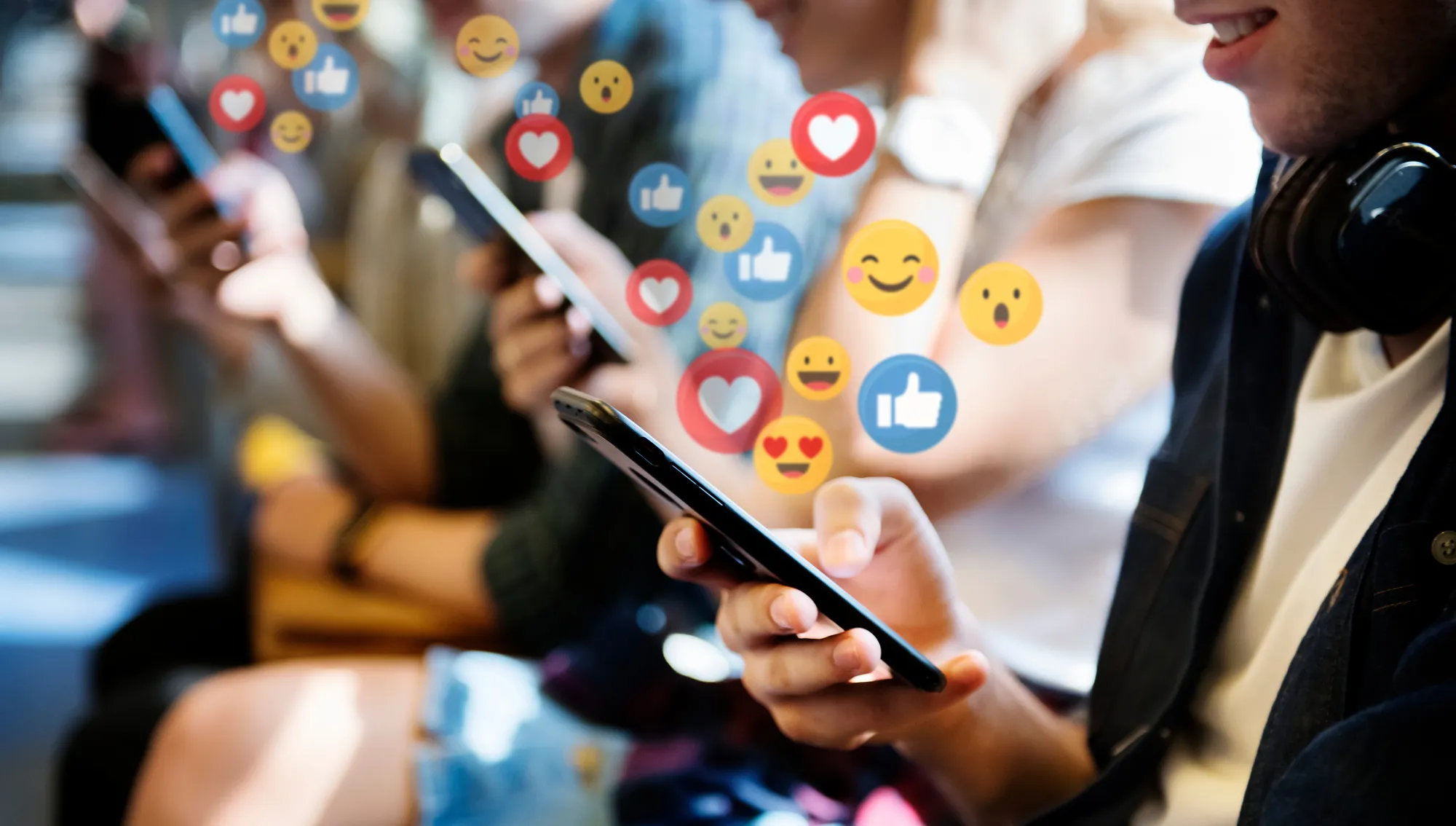Consumers have grown weary of traditional advertising tactics in the hyper-connected digital age. They crave authenticity, relatability, and genuine recommendations.
This shift in consumer preference has propelled the rise of influencer blogging, where prominent bloggers collaborate with brands strategically to promote products and services.
Influencer blogging is an invaluable means to enhance brand awareness, foster credibility, and propel sales growth. Its cornerstone lies in trust and connection.
Influencers painstakingly cultivate dedicated communities that view them as credible sources of advice and inspiration.
This inherent trust translates to heightened receptivity toward brand recommendations, unlike traditional advertising, which is often disregarded as intrusive.

This personal touch woven into authentic experiences distinguishes influencer blogging, rendering it a powerful tool for brands to build deeper relationships with their target audiences.
The Power of Influencer Blogging 2024
Why Influencer Blogging Works?
Influencer marketing has grown in popularity in recent years. Statistics in 2023 show that about one in four marketers leverage this tactic, and 89% of those engaging in influencer marketing will increase or maintain their investment.

Here are some reasons behind these numbers:
1. Trust and Authenticity
At the heart of influencer blogging lies a powerful asset: trust. Influencers dedicate time and effort to building relationships with their followers.
They become reliable sources of information, recommendations, and inspiration within their community.
This level of trust between an influencer and their audience leads to open, honest communication, making endorsed products or services far more persuasive than the impersonal nature of traditional advertising.
Moreover, the authenticity factor sets influencer collaborations apart. Consumers have become savvy and can easily spot an advertisement disguised as genuine content.
However, recommendations from a trusted influencer are integrated organically, seamlessly resonating with their audience, who perceive the brand message as an extension of the influencer's honest opinion.
2. Targeted Reach
Influencer blogging grants unparalleled targeting precision. When brands collaborate with influencers operating within specific niches, they immediately access an audience perfectly aligned with their target market.
You can also work with influencers from different platforms to reach specific demographics. For instance, working with Pinterest influencers i s ideal if your product appeals to those passionate about visual inspiration, crafts, or creative projects.
On the other hand, Twitter influencers are suitable for quick, digestible content promoting timely offers or encouraging trending conversations.
This highly targeted approach reduces wasted spend compared to conventional advertising, delivering marketing efforts directly to those most likely to engage with your brand.
The concept of a pre-qualified audience is pivotal. The people who follow and interact with specific influencers already fit the mold of your ideal customer, making them naturally receptive to your product or service.
This translates to more impactful campaigns and a greater return on investment.
3. Storytelling and Connection
Influencers excel at the art of storytelling. Instead of bombarding their audience with dry product features or sales pitches, they master the narrative.
Brand messages are gracefully interwoven into the influencer's lifestyle, experiences, and opinions. This approach personalizes the brand and transforms a product or service into something tangible and relatable for the audience.
Influencers understand the power of emotional connection. Their content often conveys emotions, evokes aspirations, and forges a sense of belonging with their followers.
When brands are skillfully included within this narrative, consumers associate the brand with specific, positive emotions, strengthening brand loyalty and driving purchasing decisions.
Strategizing Your Influencer Blogging Campaign
As it's evident that infl uencer blogging has several benefits to your brand, it's crucial to strategize how to use it. Here's a step-by-step guide to follow:

1. Define Your Goals
Clarity of purpose is crucial. What do you hope to achieve through your influencer blogging campaign? Are you aiming to increase brand awareness within a specific demographic? Drive more traffic to your website? Boost sales of a new product?
Crafting SMART (specific, measurable, achievable, relevant, and time-bound) goals will anchor your campaign, guide decision-making, and make gauging success far easier.
Here's an example: 'Increase brand awareness among women aged 25-35 in the U.S. by generating 50,000 impressions on social media within the next three months.' Such a goal offers clear direction for your campaign strategy.
2. Identify the right influencers.
Achieving your goals depends on finding the perfect influencers. Don't fixate on follower count alone-alignment is key.
Seek out influencers who embody your brand's values, have an aesthetic that resonates with your target market, and have a genuine passion for your niche. Authenticity will shine through, making any partnership immensely compelling.
Research is vital when identifying influencers. Analyze audience demographics to ensure you'll reach the desired individuals.
Don't underestimate micro-influencers and nano-influencers: though they may have smaller followings, their audiences often display remarkable loyalty and high engagement rates-a priceless asset.
3. Explore Different Types of Collaboration.
Influencer campaigns offer tremendous room for creativity and customization. Here are some collaborative avenues to explore:

- Sponsored blog posts: Detailed, in-depth articles housed in the influencer's blog provide space for valuable information and storytelling surrounding your products or services. Influencers can showcase how to use your offerings or weave your brand story into lifestyle pieces, offering insights that resonate with their audience.
- Affiliate programs: These programs incentivize sales by providing influencers with unique affiliate links . This revenue-sharing model connects campaign efforts to purchase data, allowing you to monitor the direct impact of the influencer partnership on your bottom line.
- Product Reviews: Honest, first-hand evaluations build trust with potential customers, demonstrating the strengths and benefits of your offering. Reviews allow influencers to share their experience with your product or service, highlighting specific features and adding credibility to their endorsement.
- Social media campaigns: Influencers can drive brand awareness and engagement through targeted promotions or creative challenges across selected platforms. This could involve interactive posts, challenges, or giveaways tailored to resonate with a specific audience, encouraging participation and interaction.
- Brand ambassadorships: Forming longer-term partnerships with top-tier influencers delivers ongoing, deeper brand integration with sustained audience impact. Ambassadors become natural advocates for your brand, incorporating your products or messaging into their content regularly, increasing exposure and strengthening brand loyalty over time.
These collaborations are key in driving brand awareness and bringing in leads.
A study on consumers showed that 66% had their purchase decisions driven by influencers, and 64% said influencers helped them discover a new brand. With these numbers likely to rise, look for different collaborations and benefit from consumers' trust in these ambassadors.
Influencer Blogging: Measuring Success
An influencer blogging campaign isn't just about the execution. Carefully evaluating results is paramount.
Data-driven insights will help you measure success against your initial goals, fine-tune your approach, and identify winning strategies for future collaborations.

Here's how to quantify your efforts:
Your KPIs serve as a roadmap for measuring impact. Ensure they directly tie back to the goals you defined earlier in your campaign strategy.
Common influencer marketing KPIs include website traffic, reach, impressions, click-through rates, social media engagement (likes, comments, shares, mentions), conversions, and sales.
Select the KPIs that most accurately reflect your campaign objectives. If your focus is generating brand awareness, prioritize metrics like reach, impressions, and social media engagement.
If aiming for direct sales, KPIs such as website traffic, conversions, and sales figures are most relevant.
Engagement is a significant indicator of how well your sponsored content resonates with an influencer's audience. Pay close attention to likes, comments, shares, and mentions on all campaign-related content.
High engagement suggests the brand message is compelling and relatable and sparks deeper interactions among the target audience.
But don't just focus on overall numbers. Analyze the nature of comments and the conversations unfolding around the content.
This offers qualitative insight into brand sentiment and how enthusiastically the audience has received your product or service. Are the reactions overwhelmingly positive?
Are users asking informative questions that indicate genuine interest? Are people tagging friends who might also find your offering relevant?
Monitoring engagement data closely empowers you to refine your approach further. For example, if particular posts yield exceptional engagement, identify the reasons behind their success.
Was it the type of content (a product tutorial versus an aspirational lifestyle shot), the time of day it was posted, or the specific call to action included? You can optimize your future content by adapting what worked well to drive even stronger results.
The primary aim for many brands is to generate sales through influencer partnerships. Directly tracking sales metrics is vital to understand your campaign's performance.
However, it goes beyond measuring vanity metrics like reach or impressions; it directly translates your campaign efforts into sales figures and demonstrates your collaborations' return on investment (ROI).
Here are two excellent strategies for effectively tracking sales:
- Unique discount codes: Exclusive codes given to influencers to offer their followers make linking any purchases to their contribution easy. These codes incentivize action and act as a clear tracking mechanism, ensuring each influencer gets credit for driving sales to your business.
- Trackable affiliate links: These specialized links, assigned to each influencer, contain markers that automatically attribute sales or conversions to specific sources. These can monitor click-throughs, leads, and sales, giving you real-time data on which ambassadors directly influence customer purchasing decisions.
By utilizing these data-driven strategies, you gain invaluable insights into the effectiveness of each influencer you partner with and the specific campaigns driving the most sales.
This information informs future collaboration choices, empowers you to allocate budgets strategically, and ensures your influencer marketing efforts generate a positive ROI.
Best Practices For Effective Partnerships
Successful influencer collaborations go beyond simple transactions. Nurturing genuine relationships and establishing open communication are vital to reap the full benefits.

Here are some crucial best practices to ensure your partnerships thrive:
Treat your influencer partners as true collaborators, not just promotional channels. Invest time learning what motivates them, their creative vision, their passions, preferred collaboration types, and the campaigns that excite them.
Show genuine interest in them as individuals beyond the context of your brand.
When influencers feel valued as creative partners beyond transactions, it incentivizes dedicating their talents fully to campaigns as invested stakeholders, not obligated posters.
Open, responsive communication is key. Discuss goals and ideas frequently and transparently. Provide timely feedback and insights to foster a collaborative spirit and shared sense of ownership over the creative direction.
While conveying brand messaging needs, avoid overly prescriptive directives. Influencers have a keen, intuitive grasp of what makes their audience tick.
Trust in their creative instincts to imbue branded content with their unique style in ways their followers will love.
Influencers understand how to craft stories and engagements uniquely appealing to their audience. While communicating brand values is crucial, dictating creative details can limit authentic connections.
Allowing influencers to infuse their distinctive flair inspires passion and ingenuity instead of obligation. Their followers expect and embrace seeing brands through the influencer's particular lens.
Of course, provide context on brand voice and objectives. But also encourage influencers to infuse their special flair. When creativity flows freely, audience reception and campaign performance typically benefit.
As influencer marketing expands, regulatory bodies emphasize the need for transparency through disclosing paid endorsements. Ensure guidelines are met by confirming that sponsored content is properly identified.
Clear sponsorship disclosure is crucial for building consumer trust. Require influencers to use visible #sponsored or #ad notations when posting monetized content across all platforms.
Guide best practices for prominently indicating commercial partnerships in line with the law. Additionally, educate influencer partners on appropriate disclosure methods.
This demonstrates your commitment to integrity, further building consumer trust in both brand and influencer.
Beyond legal requirements, prioritize ethics through transparent communication. Demonstrate respect for your audience by being forthright about paid arrangements with influencers.
Discuss with influencer partners how certain sponsorships align with their followers' expectations.
FAQs
Conclusion: The Power of Influencer Blogging 2024
Influencer collaborations, when grounded in strategic objectives, hold formidable potential for brand-building. Their power springs from tapping into qualified audiences via voices they already know and trust.
To fully capitalize on this, clearly define campaign goals, thoroughly vet potential influencer partners, encourage creative freedom balanced with brand needs, implement robust metrics tracking, and uphold transparency.
When mutual value powers the partnership, fruitful promos can organically link products to captivating stories that their fans would be thrilled to engage with.
Quick Links:Graham Davis is a long-time content creator who has a passion for sharing insights on digital marketing trends and tactics, including influencer marketing.
Have no idea whether to choose Pinterest influencers or ones from other social media platforms? He got you covered.
Outside of work, he loves going off-grid once in a while and taking on new adventures.
Andy Thompson has been a freelance writer for a long while. She is a senior SEO and content marketing analyst at Digiexe, a digital marketing agency specializing in content and data-driven SEO. She has more than seven years of experience in digital marketing & affiliate marketing too. She likes sharing her knowledge in a wide range of domains ranging from e-commerce, startups, social media marketing, making money online, affiliate marketing to human capital management, and much more. She has been writing for several authoritative SEO, Make Money Online & digital marketing blogs like ImageStation.
Graham Davis
